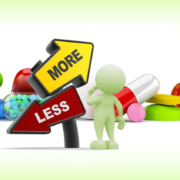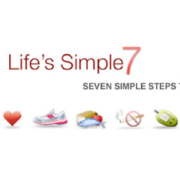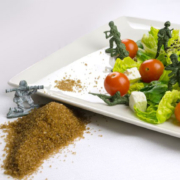Causes and Risk Factors
Rather than making this a statistics Memo, I’m going to use a couple of examples that illustrate the problems with establishing what prevents or causes disease.
Back in the late 1940s to early 1950s, there was a significant increase in cardiovascular disease. Trying to establish a single cause was complicated because there were so many variables to consider.
The Low-Fat Diet and CVD
If you read any background on the ketogenic diet, you’ll read about two factions: one that claimed a high-fat diet was the problem, while the other claimed carbohydrates from grains were the culprit. The high-fat diet faction won. While many suggest that era was the point when obesity and heart disease increased because of the explosion of carbohydrates, that was never true. They point to the Dietary Recommendations by the U.S. Senate Subcommittee on Nutrition, which focused on vegetables, fruits, and grains as the best sources of those carbohydrates. But without a decent Public Health Education Program, the recommendations were doomed to fail. The food industry flooded the market with simple carbohydrates and sugar; after all, they were carbohydrates.
Numerous randomized studies were conducted, and the largest ones failed because people didn’t follow a low-fat diet. The goal for one study was to reduce fat intake from an average of 38% to only 20%. It dropped to 24% after a year, but by six years fat had climbed back to 28%. Yet even last year, a ketogenic diet advocate was still claiming the low-fat diet failed and the study lied about the results; what the study really proved was that both reducing fat intake to 20% and increasing fruits, vegetables, and whole grains were difficult.
Cholesterol and CVD
The second story is about the relationship between levels of blood fats and CVD. It began with total cholesterol; that was the big deal for years. Then triglycerides became important based on large epidemiological studies. After that, it was LDL-cholesterol that really mattered. Then it was the ratio of total cholesterol to HDL cholesterol. The latest big thing is the size of the LDL cholesterol: fat, fluffy LDL doesn’t seem to be harmful, but small, dense LDL cholesterol does. I’d wager that tomorrow, there will be something else that will be The Big Thing.
The Bottom Line
The first story is about nutrition, and the second is about testing cholesterol. Can we predict with certainty whether you will get CVD if you follow the low-fat or high-fat dietary recommendations? No. Can a cholesterol test diagnose it? No. As the carbohydrate intake goes up, so will the risk of CVD; as blood cholesterol goes up or down, the rate of disease follows the same pattern. There’s no cause and effect. They seem to be related in some way, but they’re not predictive; they’re risk factors.
If you think back to Tuesday’s Memo when I gave the trillions of potential components that led to all the potential combinations, you can see why methods of prevention or causes of many diseases may never be known for sure. But it doesn’t change the approach to trying to find a solution: we can only know what we know today. With a methodical and rigorous approach to the scientific method, we’ll know more tomorrow.
Even if science veers in a new direction next week or next year, the only responsible course of action is for each of us to use the best knowledge we have today. And then be prepared to pivot if necessary. That’s how science works.
So what can the average person do with the flood of sometimes conflicting health information? One possibility is to let someone who understands science help you understand what’s significant and what’s not—which studies really mean something, and which are hopelessly flawed. That’s my job and my commitment to you: to sort through it all and keep you up to date on the best ways to improve your health.
What are you prepared to do today?









